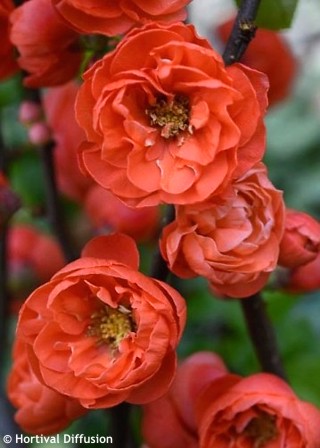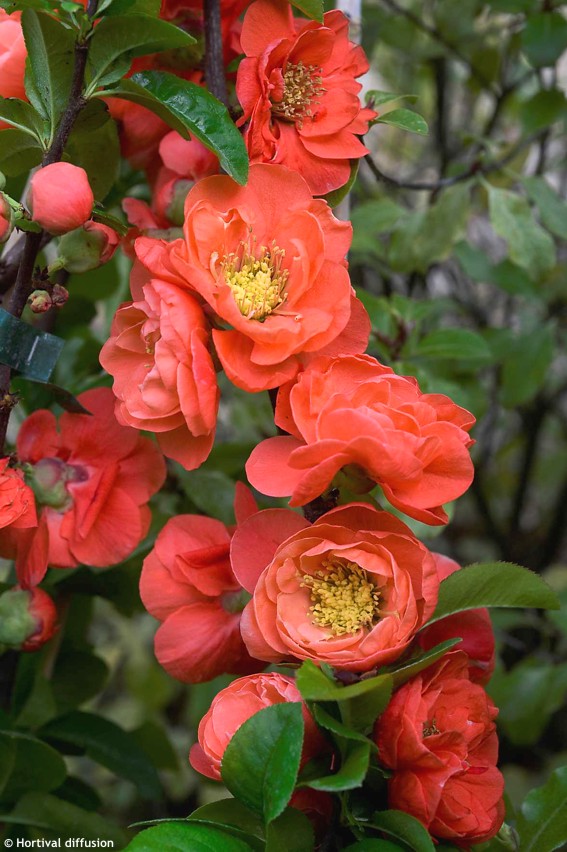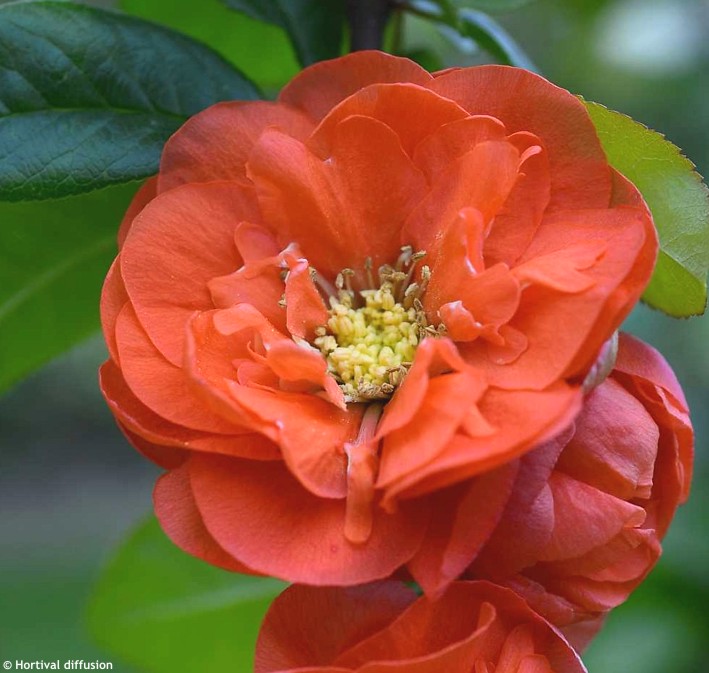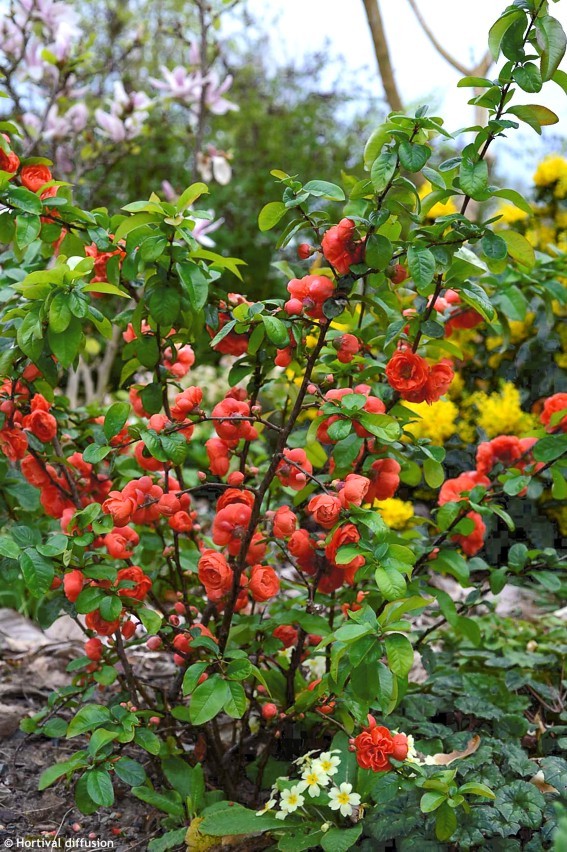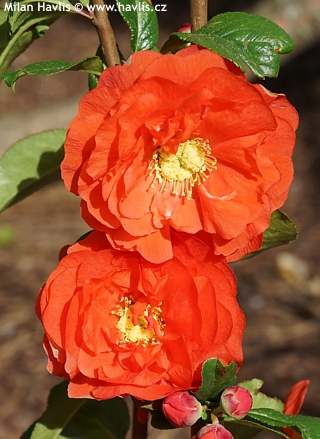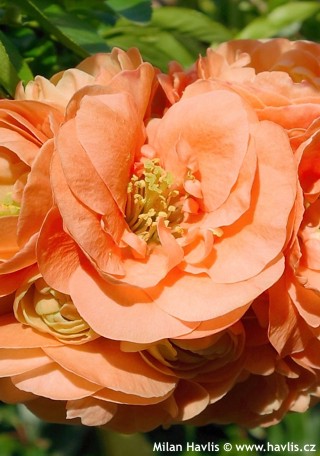Chaenomeles speciosa 'Mincha01' MANGO STORM Chinese flowering quince
Chaenomeles
Flowering quince is one of the most popular shrubs for bonsai makers. It is valued for its profuse flowering and irregular growth ideal for never-ending clipping and shaping. In Japan it is cultivated in similar quantity to flowering cherries and magnolias. It is a deciduous shrub with glossy, dark green leaves, and branches with 2-3 cm thorns, however this variety is thornless.
MANGO STORM® is another beautiful variety of Chinese flowering quince that takes us by a storm, however, which does not belong to the American Strom series. From early spring it produces very large, 6-8 cm, semi-double flowers of warm tangerine orange-red colour so the only question is Where is the mango? They commonly open in the first decade of April, however, if the winter is warm you can see numerous buds opening already in mid to late March. The shrub flowers for 6-8 weeks, and what is most interesting – it keeps small growing only about a meter tall and wide. Flowers are followed by edible, pear-shaped pomes, 4-5 cm in diameter.
It grows medium fast to fast into an upright and bushy shrub with thornless branches. MANGO STORM® exhibits a long flowering period, often in June you can still see flowers on a fully leaved out shrub. They are sterile so don't expect fruit. This variety was bred in French nursery Minier and introduced in 2015. In spite of its name STORM it comes from a different breeding than the DOUBLE TAKE™ series bred by dr. Tom Ranney from North Carolina University, USA. In 2016 it won the second prize at Innovert held during Salon du Végétal trade fair in Nantes, France.
Japanese quince will grow in almost any soil apart from too alkaline. For best results grow it in moderately fertile and reasonably drained garden soil, it can take clay and occasional drought when established but evenly moist soil will secure richer growth and better appearance. Pruning is crucial unless you like its natural unkempt habit. Prune the branches hard immediately after by 30-80% and remove leggy twigs from inside the shrub to achieve an airier habit with visible framework. Hardy to about -29°C (USDA zone 5) and suitable for outdoor pots.
Last update 29-10-2018

































